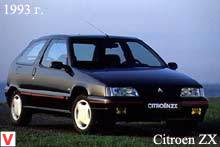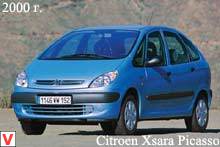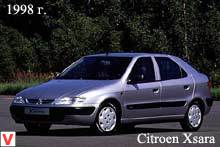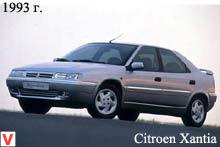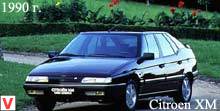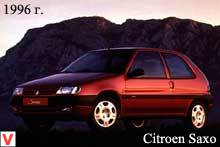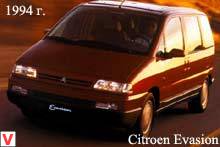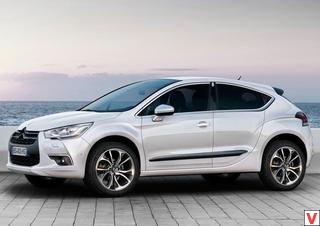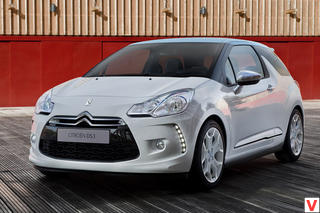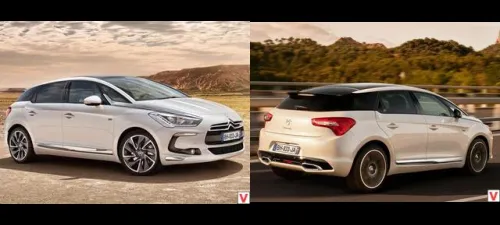
The Citroen DS5 model debuted at the motor show in Shanghai in 2011. Excellent external data combined with innovative technologies will satisfy even the most demanding customers. But Citroen DS5 is first and foremost an extraordinary car, so it will appeal to those who are not afraid to experiment. The car is based on the PSA PF2 platform, which it also shares with its fellow DS4, C4 and C4 Picasso. Hatchback length - 4530 mm, width is 1871 mm.
The height reaches 1513 mm. Wheelbase - 2727 mm. The car received a striking extravagant appearance. Creating it, designers sought to highlight this hatchback among others and put it apart, so the DS5 model is not at all like its predecessors: the Citroen DS3 and DS4. The predatory appearance is formed by lanterns with LEDs spreading over the wings, a parabolic hood shape, a huge grille with a well-styled brand badge, and also a fascinating form of air intakes on the bumper.
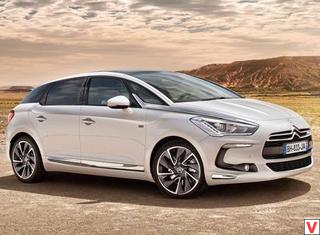
The DS5 has a roofline that falls to the back and, conversely, a rising sill line. This makes the silhouette of the car more rapid, kin it with both the coupe and the sport station wagon. Behind everything is no less attractive. The shape of the rear lights is very similar to the boomerang, and on the low and wide tailgate with two-piece glass, the brand heraldry of the model is noticeable. An interesting detail - the DS5 stern is crowned with two tailpipes of the exhaust system. But this was done for the sake of harmony, since, in fact, the exhaust pipe is only one of the chrome-plated multi-faceted tips. Design Citroen DS5 is not only beautiful, but also effective.
With the help of deflectors, a strong tilt of the windshield and the shape of the front bumper have achieved an excellent indicator of aerodynamic drag. The drag coefficient is 0.29. The interior will not leave anyone indifferent. 90% percent of the identity of the interior lies in the design of the dashboard. The center console is built on the principle of asymmetry. This asymmetry manifests itself in different forms of deflectors of the heating system, in the disordered arrangement of control buttons and their accumulation. The dashboard is non-trivial. The speedometer is located in the middle, on both sides there are a tachometer and a small display of the onboard computer.
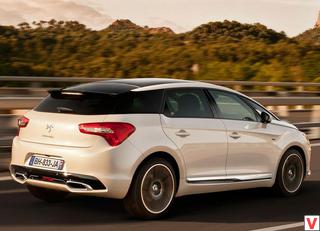
They are sunk into fancy wells. With the richest torpedo trim levels can be upholstered with quality leather. The four-spoke steering wheel is very ergonomic, its lower part is flat in the manner of formula 1. The platform for rest of the legs and pedals is metal perforated.
The seats are not only comfortable, but also have good lateral support. Three people can be located behind it. Panoramic roof consists of three separate sectors. Each of them can be closed or opened separately.
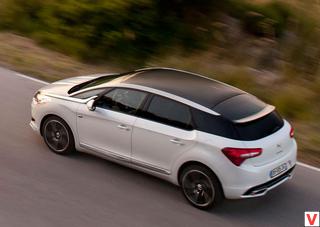
The luggage compartment volume is 468 liters, but with the seats folded, the volume increases to 1288 liters. Both petrol and diesel engines are available. All petrol models are equipped with a 1.6 liter four-cylinder engine with 16 valves. The differences are in the modifications of the engines.
The basic version is equipped with a power unit with the index VTi 155, which has a turbocharger, and also has a system for changing the valve opening level. Its peak power is 156 hp. is achieved at 6000 rpm and a torque of 240 Nm is available already at 1400 rpm. This version can be completed with a 6-speed manual transmission / automatic transmission.
With a gun, the car accelerates to 100 km / h in 9.7 seconds. The maximum speed of 202 km / h. Fuel consumption when driving in the combined cycle will not exceed 7.3 liters per 100 km. The top modification on gasoline is equipped with a motor with index VTi 200. The same four-cylinder engine was equipped with a turbine with a double helix chamber. The recoil of this 1.6 liter powerplant is 200 hp.
available at 5500 rpm. Torque of 275 Nm is realized already at 1700 rpm. DS5 with such a setting can accelerate to 235 km / h, and 100 km / h to overcome in 8.2 seconds. Fuel consumption in the urban cycle will be 8.9 liters, on the highway this figure is 5.5 liters per 100 km. Diesel engine range is represented by two units. The base diesel is equipped with a 1.6 liter four-cylinder 16 valve HDi engine with Common Rail injection. Its power is 112 hp A torque of 270 Nm is reached at 1750 rpm. With a 6-speed manual gearbox, the car accelerates to 100 km / h in 12.4 seconds.
Speed ceiling - 191 km / h. This engine is the most economical of only 4.8 liters of fuel required to overcome a path of 100 km in urban areas. The model with a 2-liter diesel HDi boasts 163 hp. Even more delightful torque of 340 Nm at 2000 rpm. According to the manufacturer, acceleration to 100 km / h with 6-speed mechanics takes only 8.8 s. The maximum speed of 198 km / h, a pretty decent result for a large hatchback. At the same time, the 2-liter HDi consumes only 4.1 liters of “diesel” in the country mode, and in a metropolis of 6.3 liters. Petrol and diesel models of this French hatchback are front-wheel drive.
The most high-tech is the 2-liter 163-strong diesel modification HYbrid4, complete with an electric motor. The recoil of the electric motor corresponds to a power of 37 hp, and it drives the rear wheels. The result is a four-wheel drive car with a total impact of 200 hp. Due to the additional power unit luggage compartment has decreased in volume to 325 liters. With a 6 speed automatic, the HYbrid4 travels over 100 km / h in 8.6 seconds. Consumption in the urban cycle - only 3.9 liters per 100 km. The basic version offers: climate control, 6 airbags, audio system, power accessories and ESP.
